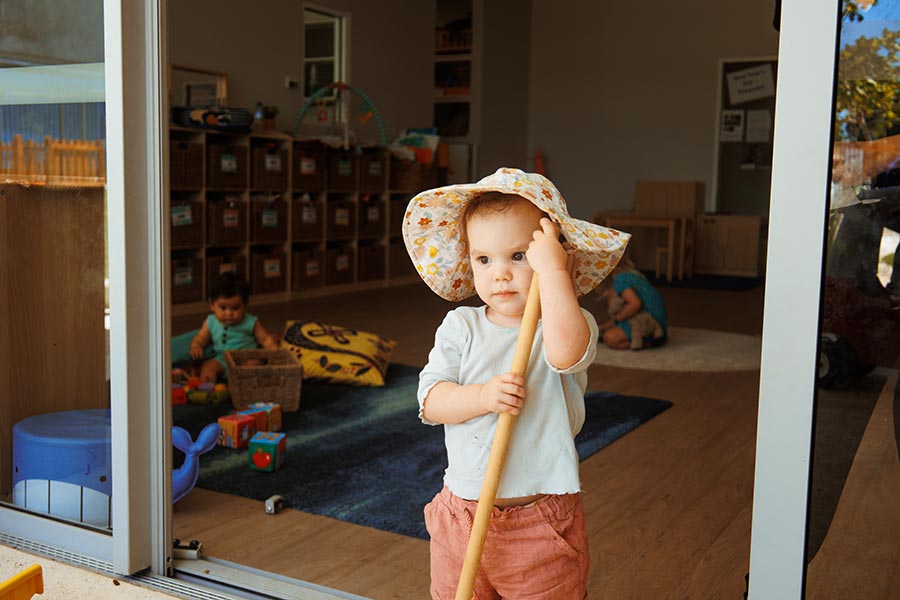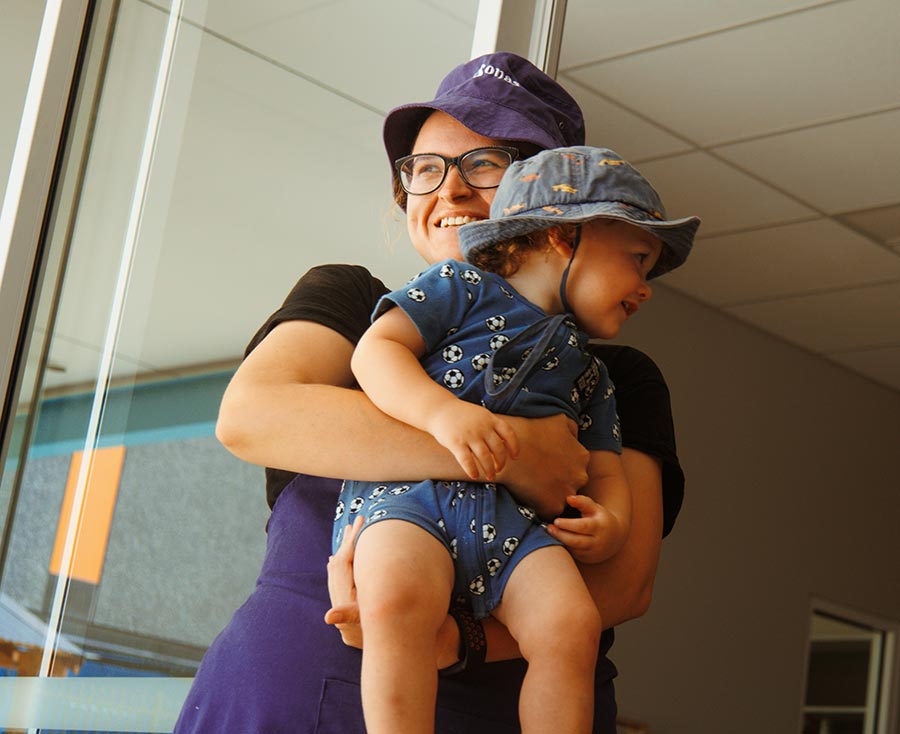Akin to its name, the Nest is a safe, nurturing space for infants at Sonas Early Learning and Care, where building relationships and attachment is prioritised.
The Nest caters for babies from birth to around the age of 18 months, with quality care, exploratory play, sensory events and targeted activities to help reach developmental milestones.
It’s important for parents to feel comfortable to leave their baby in our care so being welcoming and approachable, and establishing that open channel of communication from the outset is really important.
Sarah Brown, Sonas Ardross Nest educator
At Sonas, the Nest is the only chronological age group room, and has been established to ensure children can become familiar and confident with the Sonas environment before they are integrated into the mixed-age structure of the rest of the centre.
The mixed-age, free-flow pedagogy allows youngsters, aged from 18 months to four years, to further their learning through interactions with children of all ages in a variety of specialist studios, including the STEM, Zen, Arts, Family and outdoor Garden spaces.

Sonas Senior Centre Manager Tori Templeman said while Sonas’ mixed-age grouping prompted effective and meaningful learning opportunities, the Nest was a necessary space to ensure younger children were able to develop in safe, supported surrounds.
The studio is also where the attachment theory is embedded so children can make connections with key educators in the first 12-18 months of their enrolment.
“We describe the Nest as a safe space for the non-mobile children,” Tori said. “They are still able to engage in the mixed-age grouping but when they need that time away, it is their little safety hub.”
Tori said the Sonas key educator model, where two key educators are assigned to small groups of children and are responsible for all aspects of their health, safety, education and care, helped forge healthy relationships and strong attachment.
The Sonas key educator model is based on research by American developmental psychologist Mary Ainsworth and the ‘attachment theory’, whereby children and infants need to develop secure dependence on their parents to cope in unfamiliar situations.
“At Sonas, our philosophy centres around children forming close bonds with one or two educators who become their most trusted caregivers,” Tori said.
“That way, there is consistency in the care and educational needs for every child, not only in the Nest but as they transition to mixed-age grouping.
“These bonds also benefit the psychological and emotional wellbeing of children. Research shows emotional influences in the early years, especially the child and caregiver relationship, shapes children’s neurological, psychological and social potential.”
Sonas Ardross Nest educator Sarah Brown said building strong relationships with both children and their families was integral in caring for infants.
“Having a good relationship with the children and their parents is really important, and it takes time to get to know them well, and understand their personalities and traits,” Sarah said.
“It’s important for parents to feel comfortable to leave their baby in our care so being welcoming and approachable, and establishing that open channel of communication from the outset is really important.”
Sarah said investing time to participate in the orientation process was key to helping babies and their parents feel calm making that transition to childcare.
“At Sonas, the orientation involves ‘play and stay’ visits where educators meet the parents and get to know the baby and their routine,” she said.
“It is a stepped process that then transitions to parents sitting out the front for a time and we see how the baby goes with that separation.
“Then, we have the ‘love and leave’, which I really enjoy because it gives me a chance to chat with the parents and get to know them. Sometimes they’re going back to work, sometimes they just need a day – so you get a feel for each child and their lives.”
Sarah said the Sonas ‘key educator approach’ ensured each child had a consistent educator assigned to them for the duration of their enrolment to maintain the ‘circle of trust’.
“The key educator approach is amazing. It’s really important for children to feel safe and confident and that’s where the key educator model comes in,” she said.
“In traditional childcare, the children move room-to-room and educators change. Here, we are all under the same umbrella. That mixed-age philosophy means the older children can care and nurture the babies and toddlers too. They want to be involved and help so we teach them about using ‘gentle hands’ and softer voices, or help with bottle feeds.”




